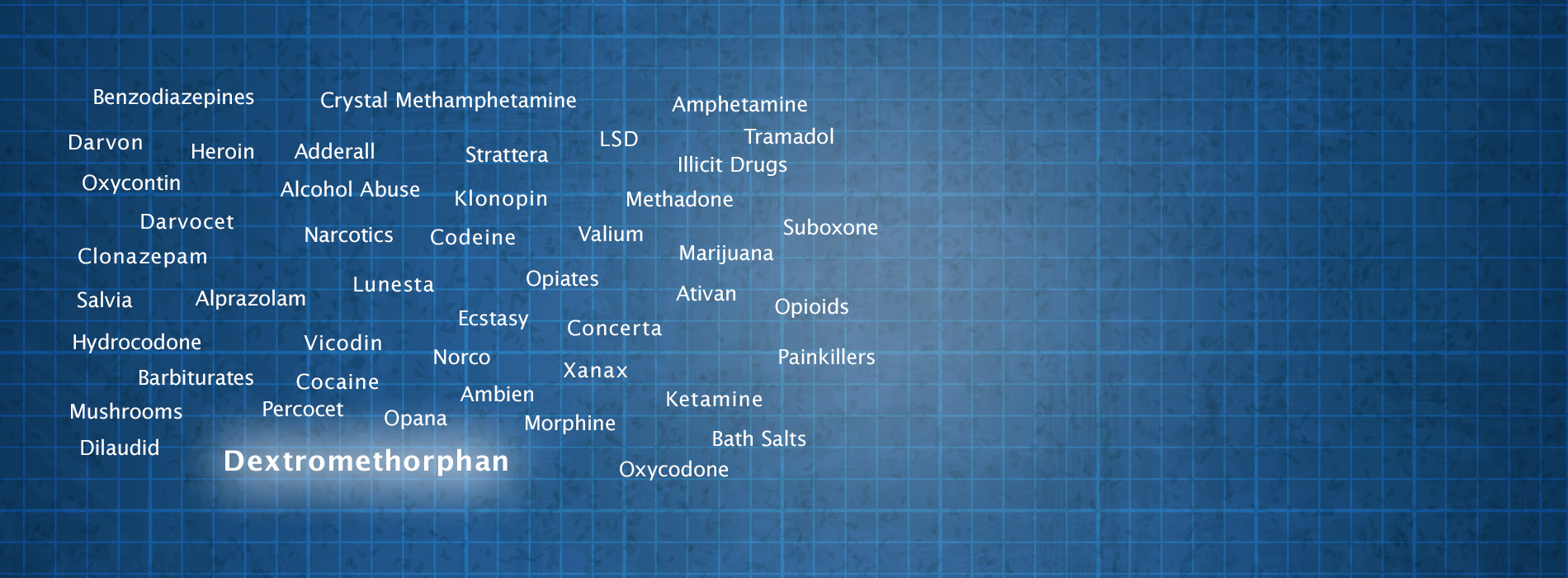Dextromethorphan
Dextromethorphan (DXM) is a synthetic drug found in many over-the-counter cough medications and expectorants. This substance promotes the removal of mucus from the respiratory tract and gives temporary relief of sinus congestion, cough, sneezing, runny nose, itching of the throat, and watery eyes. There are approximately 70 DXM-containing products, which adverse side effects and safety. During the past few years, DXM use and abuse is on the rise. The DEA reports that illicit use occurs when medicines. This is a legal substance approved by the FDA, which is frequently abused by recreational users.There are many street names for dextromethorphan. These include Poor Man’s Ecstasy, Dextro, Groove, Robo, Rome,Tussin, Velvet X, Skittles, Triple C, Brownies, Black Beauties, Turnarounds, and Dexies. The injectable form is often called Romilar K. DXM use is called roboing, robodosing, roboting, robocopping, robotripping, and tussin toss. At high doses, DXM is a dissociative general anesthetic and hallucinogen. Sudden cessation of this drug leads to serious withdrawals and psychological effects, such as depression and drug cravings.
DXM Abuse
DXM abuse prevalence is not identified because it is difficult to trace. Licit use among consumers involves a dose of 10 to 20 mg every four to six hours. Recreational users will often take up to 1500 mg at a time, and some heavy users report ingesting 3 or 4 bottles each day of DXM. According to the DEA, Internet sites advise young people to drink the syrup fast, as it needs to be absorbed before vomiting begins. Also, there is powder, capsule, and pill forms of DXM available on the Internet. Users will find instructions on just how to use/abuse this drug readily via the WWW.
DXM Effects
- Panic attacks and anxiety
- Lack of coordination
- Dizziness
- Slurred speech
- Hyperactivity
- Rapid eye movement
- Nausea and vomiting

